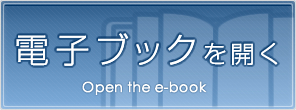「人道研究ジャーナル」創刊号 page 16/216
このページは 「人道研究ジャーナル」創刊号 の電子ブックに掲載されている16ページの概要です。
秒後に電子ブックの対象ページへ移動します。
「電子ブックを開く」をクリックすると今すぐ対象ページへ移動します。
概要:
Journal of Humanitarian Studies Vol. 1, 2012? 8.8 million children die from preventablediseases like diarrhoea and pneumoniaeach year.? Non-communicable diseases likecancer, cardiovascular diseases an....
Journal of Humanitarian Studies Vol. 1, 2012? 8.8 million children die from preventablediseases like diarrhoea and pneumoniaeach year.? Non-communicable diseases likecancer, cardiovascular diseases anddiabetes represent 63 per cent of allannual deaths.? In an abundant world, one billion peoplego to bed hungry every night.? National Red Cross and Red CrescentSocieties reached over 17.8 millionpeople with HIV prevention activities in2010.? More than four million people in 54countries were served with clean waterby the Red Cross and Red Crescent inthe last five years.? In 2010, seventeen million peoplereceived Red Cross Red Crescent firstaid training.class advice on how to strengthen their disastermanagement laws and policies. The IFRC is alsoleading the way in the development of proceduresthat can speed the delivery of internationalhumanitarian relief while ensuring adequate localcontrol and oversight.Enabling healthy and safe livingNational Red Cross and Red Crescent Societiesuse community-based approaches to deliverhealth activities that reduce vulnerability in areassuch as first aid, TB, HIV, maternal and childhealth and more. Every day, Red Cross RedCrescent volunteers bring care to those who needit most and to those who cannot access the formalhealth system. As local citizens familiar withlocal practices, volunteers are able to break downbarriers to access. They travel the“last mile”where others cannot reach, in some cases goingdoor-to-door, in remote regions, delivering vitalhealth services.Eye on 2011: Kenya ? Food security now and for the long term2011 was a year largely defined by the realities and those were unable to meet even basic food needs.the images of a tragic food security crisis in the Horn After a 1997 drought wiped out much of theirof Africa. Somalia and Kenya were most affected, livestock, and left them unable to support theirwith hundreds of thousands of people turning to the families, some pastoralists turned to farming. Morehumanitarian sector for vital support. Together, the dry years followed and they struggled; in the wakeIFRC and National Societies in the region mounted of persistent drought from 2007 to 2009 the Reda significant response. In Kenya, the Kenya Red Cross stepped in to help. With US$700,000 fromCross Society (KRCS) has been carrying out school the Japanese government they set about assistingfeeding programmes, rehabilitation of boreholes, recovery promoting livelihoods through improvedand general food distribution. It has also been and diversified production and seasonal incomesupporting sustainable food security interventions options.in communities and schools through greenhouse Farmers in three communities were helped to expandfarming.the cropped land, and 1,200 acres were ploughed andBut the work of the Kenya Red Cross Society is not harrowed for them. Tonnes of seeds and thousandsjust about meeting immediate needs. They have been of seedlings were distributed, and irrigation pumpsworking for years, with support from around the supplied to better utilize water from the nearby Tana.world, to address the impacts of a changing climate Farmer Aden Shekh put it this way:“As a farmer Ion pastoralist communities. For example, The Tana can send my children to school, and we do not goRiver Drought Recovery Project has turned life hungry during drought such as we have today. Now,around for once destitute farmers in one of Kenya’s there is life. There is also self-belief. There is dignity.poorest areas. For more than ten years, recurring The man’s neighbour said:“I can’t be a pastoralistdrought, and destructive flood, had exacerbated anymore because of how I suffered. I just want topoverty. Some 77 per cent of Tana North District’s expand my farm and add canals and more machines inpopulation ? originally mostly pastoralist ? was order to help the com¬munity. Things have improvedliving below the poverty line, and more than half of for me, things have settled down. I am happy.”14人道研究ジャーナルVol. 1, 2012

